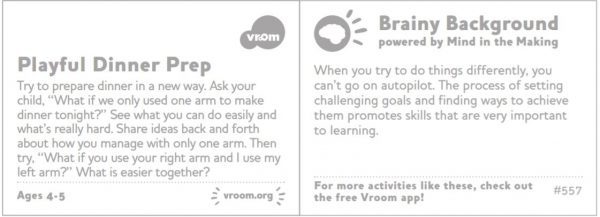Newsletter: August 2018
Falling into Family Dinner

As the summer draws to a close, it’s inevitable that most families will be gearing up for a shift in routines. While the change in seasons is most pronounced for those with school-aged children at home, there’s something about Summer that tends to bring a more relaxed feeling for most of us, while Fall seems to signal a return to more disciplined schedules.
Now is the perfect time to begin planning for what daily life will look like when those schedules do return, including when and how to fit family dinner into your calendar. Here are some simple steps you can take right now to ensure that you’re prepared for family dinners this fall:
- Spend some quality time with the calendar. Note which days of the week will typically be most challenging in terms of getting everyone together for dinner. Then ask yourself why — is it because everyone’s coming and going at different times? Because having enough time to cook a meal and eat it before other obligations begin will be difficult? If you have a clear idea of what’s going to complicate family dinnertimes, you will be more ready to overcome the challenges.
- Choose (and prepare) a few quick make-ahead or last-minute meals. Make a list: Soups, stews, chilis and casseroles are all great items that can be made on a weekend and reheated on a busy weeknight, or made now and put into the freezer for later. Sandwiches, egg dishes, wraps and fast pasta dishes with few ingredients are good ideas for last-minute meals that need to get to the table in under 30 minutes. And the occasional frozen pizza with a bagged salad won’t hurt in a pinch. Buy freezer and shelf-stable items now, and make sure to add fresh ingredients for one or two “fallback” meals to your grocery list each week so you’ll always be able to make dinner.
- Plan to share the load. Part of what complicates family dinner in many households is that the workload of planning, shopping, cooking and cleaning up all falls to one or two people. Think carefully about how you can involve everyone in some aspect of dinner — can your toddler bring napkins and unbreakable cups to the table? Can your 8-year-old be in charge of the salad, and your 12-year-old start learning the ropes of dish duty? Start making these jobs a part of the routine now, so they become a habit before hectic evenings set in.
- Have a fun and conversation game plan. This is a great way to get younger kids and teens involved, too. Make a basket of table-friendly card games and a jar of conversation starters so you’re always ready to pull out the fun and conversation during mealtimes. Check out our ideas for more fun activities, too, and see which ones appeal to your family. The more table games you learn to play together, the more ideas you’ll have to stave off boredom and negativity not just at your own dinner table, but at restaurants and in long lines, too!
Make Preparations Playful
If you have younger kids at home, try this tip from our friends at Vroom!

Family of the Month
Meet the Aaser family! They’ve found a creative and nurturing way to share the workload and make family dinners happen, while bringing the whole family closer to one another.
Real Family Dinner Projects: The Aaser Family
Food

This quick and healthy dinner is made almost entirely from pantry staples, and can be on the table in 30 minutes or less for a fast family meal.
Pasta with Tomatoes and Chickpeas
Fun

Get everyone involved in adding story starters to a jar that you can keep handy for family dinner fun!
Conversation

If Back-to-School will be part of your Fall routine, try our Best Back-to-School Questions for a dinner conversation everyone will enjoy.
Recent Newsletters
- When Picky Eating Might Be Something More - July 2024
- Feeling Lonely? Share a Meal. - June 2024
- Welcome to May Madness - May 2024
- Family Dinner Has Gotten Expensive - April 2024
- Is it the Family, Or the Dinner? - March 2024
- Black History Month at Family Dinner - February 2024
- New Year, Same You - January 2024
- Sharing the Holiday Load - December 2023
- What’s Your Thanksgiving Story? - November 2023
- Family Dinner: Stressful, or Stress-Busting? - October 2023
- New Ways to Ask “How Was Your Day?” - September 2023
- Low Stress, Low Cost, Low Waste Dinner Hacks - August 2023
